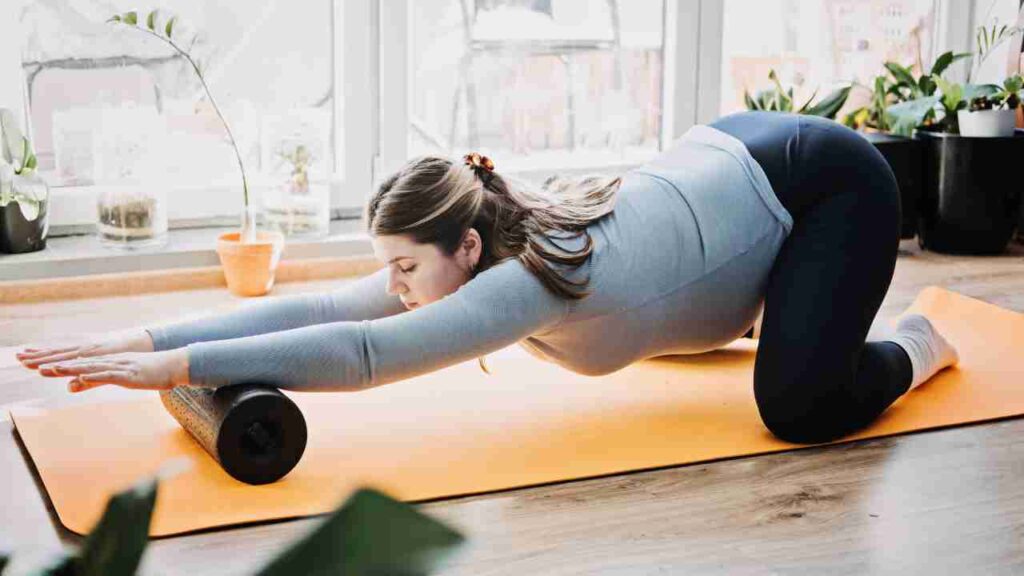When is the Best Time to do Yoga?

If you’re a beginner to yoga, it can be hard to know when it’s best to perform a yoga practice. Like other forms of exercise, there are benefits to working out at different times of the day, and yoga is no exception. Not only can yoga be practiced at different times of the day it can also be practiced in a variety of different ways. Yoga can help:
- Increase Physical Strength and Flexibility
- Reduce Stress
- Improve Balance and Coordination
- Prevent Injury
- Stimulate Rehabilitation
- Correct Posture
While yoga is a traditional, long-standing practice, it has gained worldwide popularity among practitioners of all ages and genders. Societally, yoga’s more gentle forms of practice can be seen as overly feminine, but yoga for men can also be a powerful strengthening practice. For men and women, yoga can be a transformative practice that enhances strength, mobility, and mental clarity.
Yoga offers a holistic approach to fitness and wellness by incorporating the mind, body, and soul within a single practice. By optimizing health and vitality, a consistent yoga practice can lead to healthier, more balanced lives for men and women. So, whether you practice in the morning or evening, below we’ll explore the pros and cons of the best times for yoga.
The Best Time to Practice Yoga
The best time to engage in a mindful yoga practice can vary from person to person. Due to schedules and preferences, no one time fits all the best. Below, we’ll explore the pros and cons of practicing yoga at different times throughout the day.
Morning
Yogi and fitness experts may argue that the best time to perform yoga is first thing in the morning. While a morning yoga routine can be different for everyone, it has the power to set the tone for your day. It can energize the body, increase focus and mental clarity, and enhance metabolism and digestion.
Engaging in yoga upon waking provides multiple benefits for the body, mind, and spirit. It allows practitioners to wake up their bodies and minds with intention and purpose. The early hours of the day, in a traditional sense, help to foster introspection, enabling practitioners to set positive intentions for the day.
The best types of yoga to practice in the morning would be routines that are challenging and active. Some practitioners prefer a gentle yoga routine–either practice can be beneficial. Yoga performed in the morning helps warm up stiff muscles, alleviate fatigue, lubricate joints, and enhance flexibility. It is also beneficial to practice before breakfast or no sooner than thirty minutes after eating. Having a morning practice can help practitioners achieve optimal physique alongside increased mental acuity throughout their day.
Afternoon
While it’s less common to work out during the day, an afternoon yoga practice can still provide some benefits. For some, it can be difficult to arrange time and energy in the mornings or evenings for a consistent yoga practice. A midday yoga session can help re-energize you during that afternoon energy slump.
Afternoon yoga can be a great way to reset the body and mind, especially if your work requires a lot of sitting. Taking a yoga break can help promote circulation and release tension in the body. It’s also beneficial to take a meditative break and quiet the mind from a busy or stressful morning. Focus on yoga poses that help support the spine and release tension throughout the whole body.
Evening
Modern life can be hectic, and for those who aren’t morning people, an evening yoga practice may be best. An evening practice can be a great way to release the tension and stress that’s accumulated over the day. Yoga before bed can help promote relaxation of the central nervous system and increase sleep quality.
Gentle stretches, restorative poses, and mindful breathing exercises promote a sense of ease and serenity. Since the body is more flexible at night, if your goal is an increased range of motion then a night routine would be beneficial. Avoid yoga routines that require too much exertion and can increase your heart rate. Doing practices that are more strenuous at night can have a counter effect on the body and disrupt sleep schedules.
A nighttime yoga practice can help practitioners create a routine that allows space for self-care and introspection. A relaxing and rejuvenating yoga sequence before bed can help the body prepare for sleep and provide deeper rem cycles.
Incorporating Yoga into Daily Life
There’s a wide range of benefits to be gained from incorporating yoga into your daily life, such as increased energy, flexibility, and muscle strength. The most important part of any yoga routine is building consistency. Regardless of the time of day, committing to practicing yoga multiple times a week is the best way to generate desired results.
Here are some tips for building a consistent yoga practice:
- Start slowly with short sessions so you can build up to higher-intensity practices.
- Set realistic goals for yourself that honor your body and mind’s fitness levels.
- Find the best yoga style for you that supports your individual goals and needs.
- Integrate yoga into your existing workout routine by pairing it with activities such as cardio or weight training.
- Use other resources such as online tutorials or by taking a yoga class at your local studio.
- Listen to your body and respect any physical limitations that may present themselves during your practices.
Finding Your Rhythm
The best time to engage in a yoga routine is deeply personal, as we all have different lifestyles, needs, and goals. There are many ways to perform yoga, some work best for the mind while other positions support the muscles and joints. Experimenting with yoga styles at different times of the day can help you figure out a routine that resonates best for your body and mind.
Whether you find either mornings, midday, or evenings best for your yoga practice, what’s most important is building a consistent routine. There are specific times when you shouldn’t practice yoga, such as after overeating or when the muscles are already sore. Other than these small factors, a consistent yoga routine is best no matter the time of practice.
Author Bio:
Joshua White is a passionate and experienced website article writer with a keen eye for detail and a knack for crafting engaging content. With a background in journalism and digital marketing, Joshua brings a unique perspective to his writing, ensuring that each piece resonates with readers. His dedication to delivering high-quality, informative, and captivating articles has earned him a reputation for excellence in the industry. When he’s not writing, Joshua enjoys exploring new topics and staying up-to-date with the latest trends in content creation.




Responses